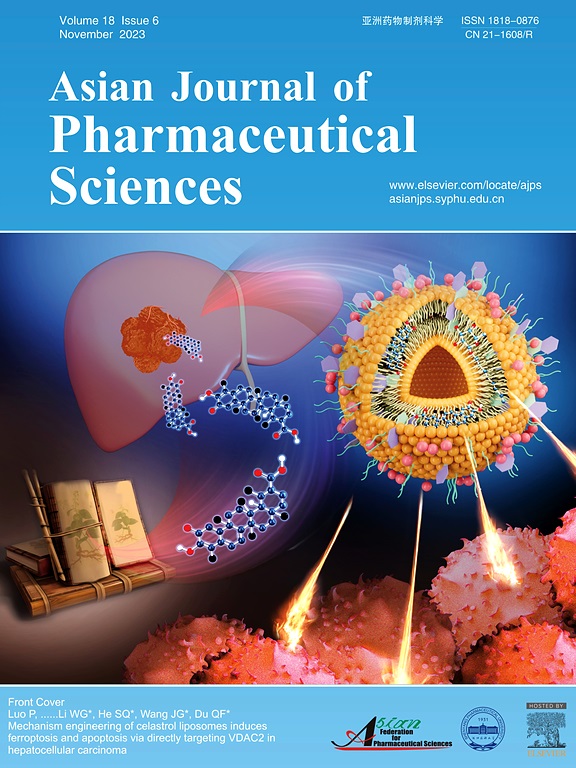Amphiphilic lipid-peptide engineered placenta-derived mesenchymal stem cells for liver fibrosis treatment
IF 10.7
1区 医学
Q1 PHARMACOLOGY & PHARMACY
引用次数: 0
Abstract
The global mortality rate due to liver diseases, particularly liver fibrosis, is increasing. Among various treatment methods, stem cell therapy using placenta-derived mesenchymal stem cells (PDMSCs) offers distinct benefits, including ease of isolation and superior proliferative potential. To enhance the therapeutic efficacy of PDMSCs, the WKYMVm peptide was selected for cell engineering. Immobilization of WKYMVm on PDMSC membranes facilitates effective peptide binding to the formyl peptide receptor 2 on adjacent PDMSCs and hepatocytes, thereby enhancing cell activation and achieving more efficient peptide utilization compared to bolus peptide treatment. Increased cell activation enhances the secretion of paracrine factors including growth factors and cytokines, which in turn improves liver function and vascular repair in both in vitro and in vivo models. This approach not only enhances the angiogenic and therapeutic capacities of stem cells, but also enables efficient peptide utilization, minimizing potential side effects and costs associated with high peptide dosages. Overall, our study demonstrates significant promise of stem cell therapy for treating liver fibrosis. Thus, stem cell therapy offers considerable prospects for clinical applications.

两亲性脂肽工程胎盘源间充质干细胞用于肝纤维化治疗
全球因肝脏疾病,特别是肝纤维化造成的死亡率正在上升。在各种治疗方法中,使用胎盘源性间充质干细胞(PDMSCs)的干细胞治疗具有明显的优势,包括易于分离和优越的增殖潜力。为了提高PDMSCs的治疗效果,选择WKYMVm肽进行细胞工程。将WKYMVm固定在PDMSC膜上,可以促进肽与邻近PDMSCs和肝细胞上的甲酰基肽受体2的有效结合,从而增强细胞活化,与注射肽治疗相比,实现更有效的肽利用。在体外和体内模型中,细胞活化的增加促进了包括生长因子和细胞因子在内的旁分泌因子的分泌,从而改善了肝功能和血管修复。这种方法不仅增强了干细胞的血管生成和治疗能力,而且能够有效地利用肽,最大限度地减少与高剂量肽相关的潜在副作用和成本。总的来说,我们的研究显示了干细胞治疗肝纤维化的重大前景。因此,干细胞治疗具有广阔的临床应用前景。
本文章由计算机程序翻译,如有差异,请以英文原文为准。
求助全文
约1分钟内获得全文
求助全文
来源期刊

Asian Journal of Pharmaceutical Sciences
Pharmacology, Toxicology and Pharmaceutics-Pharmaceutical Science
CiteScore
18.30
自引率
2.90%
发文量
11
审稿时长
14 days
期刊介绍:
The Asian Journal of Pharmaceutical Sciences (AJPS) serves as the official journal of the Asian Federation for Pharmaceutical Sciences (AFPS). Recognized by the Science Citation Index Expanded (SCIE), AJPS offers a platform for the reporting of advancements, production methodologies, technologies, initiatives, and the practical application of scientific knowledge in the field of pharmaceutics. The journal covers a wide range of topics including but not limited to controlled drug release systems, drug targeting, physical pharmacy, pharmacodynamics, pharmacokinetics, pharmacogenomics, biopharmaceutics, drug and prodrug design, pharmaceutical analysis, drug stability, quality control, pharmaceutical engineering, and material sciences.
 求助内容:
求助内容: 应助结果提醒方式:
应助结果提醒方式:


